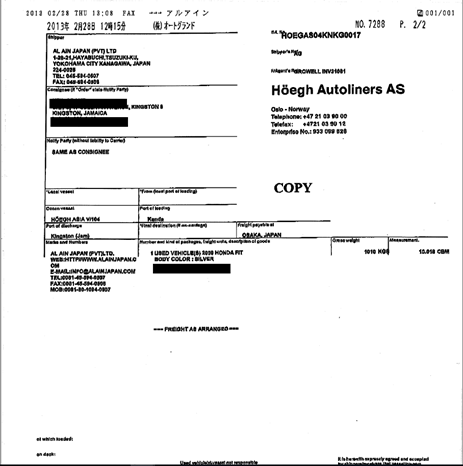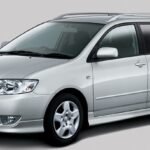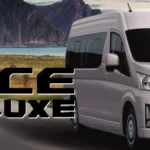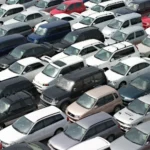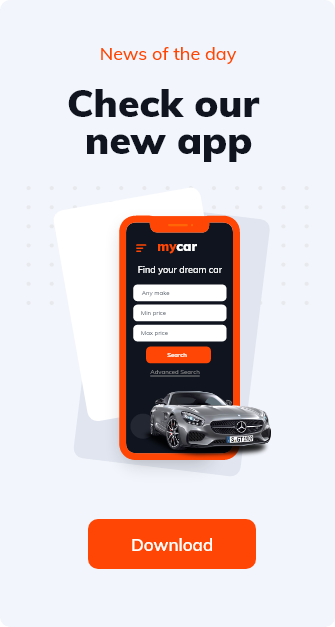

How to import cars from Japan to Trinidad
Most Trinbagonians who want to buy a car think they only have two options: buy a new car from a dealership or a buy a used car from foreign-used car dealership. The first option is too expensive, and the cars have lesser features than cars intended for countries like Japan, UK or US. The second option leaves you with settling for cars that may have been owned by 4 or five people before you.
Do you know that you actually have a third option? You can also personally import a car from another country, like Japan. Understandably, the idea of buying a car by yourself and then doing the clearing process by yourself may be challenging. But it’s also a rewarding challenge when accomplished. If f you are up to this challenge, keep reading. This article is divided into two parts: part one is about choosing and buying your car from Japan, and part two is about clearing your car from Customs at either Port of Spain or Point Lisas.
After reading this, you will have a clear understanding of how to buy your car from an online car showroom.
Step 1. Find a reliable car exporting company. Make contact with them.
Set a criteria for the car exporter you want to deal with. There are several great used car exporters in Japan. The company you end up with will determine how smooth your experience will be. My checklist includes:
- Transparent business operation
- Experience
- Accreditation
After you’ve done your research and are confident that you may have found your company, go ahead and make contact. Email them, chat with a representative, call – it’s up to you. State your business. Don’t hesitate to ask your questions. Hopefully you’ve listed down all the questions you need answers to.
Step 2. Choose your car.
Visit the companies’ website and go through their stock options. Company stocks are listed according to countries because each country has its own import regulations that are different from Trinidad and Tobago’s. To make it easy for you, click on your flag and browse the stocks listed in it.
Each stock will show several images of the car, important details about the car, and its FOB price. Here is a great example of a stock list for Trinidad from AA Japan, one of Japan’s most trusted exporters.
When discussing payments, here are some of the most used words in the car importing industry:
- FOB – free on board
This is the price you immediately see displayed on websites. This price does not include shipping and insurance charges, import duties and all other extraneous fees. Since these additional fees are outside the control of exporting companies, we only display the price we can control. - CNF – cost, no insurance, freight (or cost & freight)
This is a price quoted if you want the exporter to include freight charges on top of the fob price. - CIF – cost, insurance, freight
This is a price quoted if you want the exporting company to include freight insurance on your car. Japanese insurance firm Tokiomarine-Nichido lists the following claims included with their insurance packages: (different insurance companies have different claims available, please check with them for more details. Pricing varies.) Claims for freight, damage, Claims for joint loss, Transportation costs ,Others (not covered by above) - RORO – roll on roll off
RORO is one form of shipping cars to Trinidad and Tobago. The cars are being driven as is into the shipping storage, and then driven off the ship once it reaches either ports Point of Lisas or Port of Spain. - Container shipping
Cars are placed into 20 or 40 ft containers, and the containers are then placed on the ship. Upon arrival in your port of choice, the container is taken off the ship and the car inside is carefully displaced. Container shipping costs additional fees. - Proforma Invoice
A proforma invoice is a digital invoice/agreement that indicates the amount you must pay and a fine print on the conditions of the transaction that you entered with the exporter. It also contains details about the car you are buying.
Step 3. Discuss payment options
Ask for a sales quote or proforma. This is a document that your seller prepares which states the amount agreed upon by both of you for the unit you want to buy. When you visit a bank to pay, bring the proforma with you. Almost all exporters only accept payment through bank transfer. A few may offer PayPal. It all depends on your exporter.
- Bank transfer / TT – telegraphic transfer
Telegraphic transfer is a method of payment where you remit your payment in person to the exporter’s bank account. You and the exporter will get a receipt for the transaction. It usually takes at least three business days for a telegraphic transfer payment to be received by the exporter. The exporting company lists on its website the bank information where you can legitimately send your payment. - Paypal
If going to a bank is inconvenient, you can choose to pay online through PayPal. PayPal payments take longer to process. A complete transaction can be anywhere between 3-10 business days.
Most buyers choose to pay by TT because it is the safest and most transparent method of transferring big money. When you pay by telegraphic transfer, you must go to your bank to remit payment in person. Try to attach your invoice to the transfer form and inform the teller to include the main details about the car (car brand, engine and reference number). Scan the transfer form and send a copy to your seller. Generally, companies require for payment to clear before your car is shipped. Before shipping, there are other processes that are being done and documents being prepared so your car smoothly transfer to you.
Step 4. Wait for documents.
Your exporter will be responsible for at least three documents. Take note that these documents are only a part of all the documents required to clear your car from the Customs in Port of Spain or Point Lisas. Let’s go through each of the documents and its significance to you.
- Deregistration Certificate aka Export Certificate
The Deregistration Certificate proves that the car you bought was legitimately sold to and bought by the exporter. Therefore, the car is legally allowed to be resold and brought out of the country. To get the car’s Deregistration Certificate, the car’s owner must first personally deregister the car from his/her name at the local Japanese Transport Authority. The deregistration document is then converted into the Japanese Export Certificate at the Japanese Customs Office. Once ready, this document will be mailed to the exporting company.
- Bill of Lading
Investopedia defines bill of lading as “a legal document issued by a carrier to a shipper that details the type, quantity, and destination of the goods being carried. A bill of lading also serves as a shipment receipt when the carrier delivers the goods at a predetermined destination. This document must accompany the shipped products, no matter the form of transportation, and must be signed by an authorized representative from the carrier, shipper, and receiver (https://www.investopedia.com/terms/b/billoflading.asp).”
In short, a B/L is THE receipt that shows and proves that the car you’re clearing in the port has been bought and paid for by you. The B/L contains your name and other identifying details, so you MUST BRING this document with you when claiming your car. A B/L requires a notify party (person or company that will be notified of the arrival of the shipment – a clearing agent or you) and a consignee party (the person or company legally allowed to claim the car – you). Once this document is ready, the shipping company will mail it to the exporter.
After your payment has been verified as cleared, the exporter will make sure that the two documents are readied as quickly as possible. Because each document is issued by different companies, each document will be received separately, and it may take time to collect all of them. When both documents have been gathered, your exporter will mail these documents to the consignee of this transaction, in a single packet as part of the paperwork required to claim your car.
If you are excited to see how these documents look like, or just want assurance that your car is on its way to you, you can and should ask for a digital version of each document from your seller. To track the progress of your car in the importing process, you can create a customer account in the exporter’s website. There you can check all the documents, payments, receipts and other details any time you want.
Step 5. Clear your car from Customs
At best, it takes 4-5weeks for your car to reach your port. You will be informed once your car has left Japan. Sometimes it may take longer. Once the ship has left Japan, your exporter has no more control on what can happen to your car. Along the way to Trinidad, the shipping company decides the route, the stops, and everything in between. When the ship arrives, you will be informed as well. The shipping company decides how long they can hold your car for you while you take care of the clearing process.
The clearing process in the Customs is also beyond the control of your exporter. There will be fees, taxes and duties, and additional documents that Customs will require before your car is released. All these will be your responsibility. For starters, Trinidad’s Customs and Excise Division office has this page, http://www.customs.gov.tt/, for your reference. Clearing your car can only be processed by a licensed agent. Make sure that your clearing agent is competent and trustworthy.
If you would like to know more about clearing your car from Customs, read part two here.
Importing a used car from Japan by yourself gives you another option when it comes to buying your dream car. You get to learn how to bring in cars like a pro. You have more control over how much your car costs, and you end up saving stacks of TT$ along the way.
Add a comment Cancel reply
Categories
- Auction (2)
- Car Models (7)
- Importing Process (5)
- Shipping (3)
- Stock (1)
Recent Posts
About us

Related posts


How to Ship a Used Car From Japan - Part 1

The guide to import used cars from Japan to Jamaica



